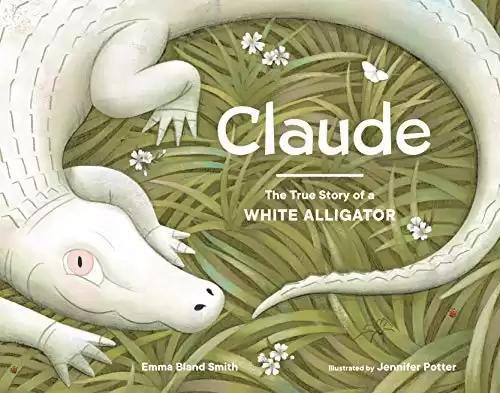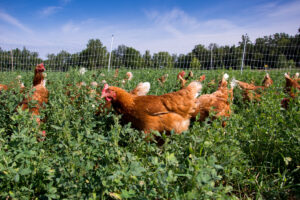| Best for | Product |
|---|---|
| Best Overall | Alligators and Crocodiles |
| Best Board Book | Chomp Goes the Alligator |
| Best Animal Character | See You Later, Alligator |
| Best Encyclopedia | Ultimate Reptileopedia: The Most Complete Reptile Reference Ever |
| Best Coloring Book | Alligators And Crocodiles Coloring Book! Discover These Pages That Kids Can Color |
| Best About a Zoo | Claude: The True Story of a White Alligator |
| Best Field Guide | National Audubon Society Field Guide to North American Reptiles and Amphibians (Chanticleer Press Editions) |
Chomp, chomp, chomp. Watch out! There’s an alligator on your bookshelf! Alligators are fascinating creatures and books about the giant reptiles are available for both kids and adults. There are options geared toward young readers that feature adorable alligators as well as those for budding scientists and adults that showcase the reptile’s wilder nature.
Alligators don’t make good pets so there aren’t many guides to caring for them out there. However, you can find fun guides published by zoos and conservation organizations about their behavior, habitat, feeding habits, and other facts that will help you learn more about alligators. They play an important role in their environment and it’s important that we all take steps to learn how we can protect them.
Here are some of our favorite books about alligators that you can read today.
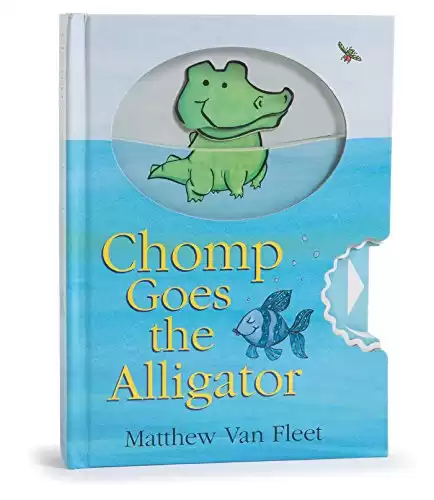 Check Amazon
Check Amazon- Gives your child a chance to practice their counting
- Illustrations are fun and engaging
- Provides an opportunity for your child to learn about cause and effect
 Check Amazon
Check Amazon- Great option with fun characters that show real-life animals
- Introduce your child to a new animal species while capturing their heart
- Beautiful illustrations
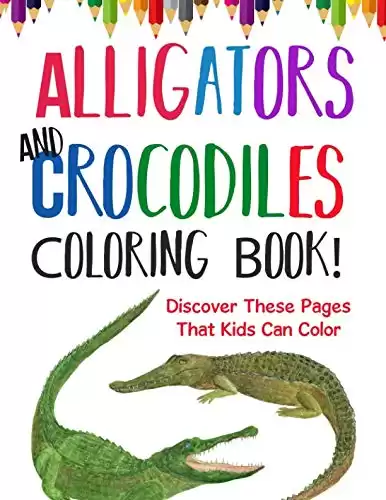 Check Amazon
Check Amazon- 56 pages to color
- Different illustrations of alligators and crocodiles, helping your child understand the difference between them
- Way to stimulate your child's mind
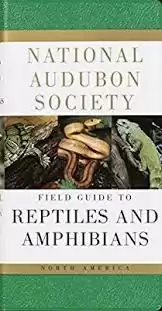 Check Amazon
Check Amazon- Small enough to fit in a pack but comprehensive enough to go into helpful detail
- Exterior is extra durable and made of vinyl
- 657 different plates that show various species
#1 Best Overall: Alligators and Crocodiles by Laura Marsh
Alligators and Crocodiles by Laura Marsh is our choice for the #1 Best Overall book about alligators. It’s put out by National Geographic Kids so you know it has plenty of fun facts, photos, and illustrations that help you learn more about alligators. It is at Reading Level 2 and best for independent readers. While it does include some scientific names and terms, it provides enough context for most readers in 1st grade and above to figure most of it out on their own. For younger kids, you may need to help sound out a few words or decipher scientific vocabulary.
The book itself has plenty of colorful backgrounds and text boxes that keep kids focused on the page. Because it’s National Geographic, their photos are especially amazing. It is organized well and includes different species of alligators and crocodiles, as well as the key differences between the two. Facts include their size, appearance, habitat, and life expectancy.
Once your child has exhausted the book, you can get additional resources on the National Geographic Kids website. They are designed to complement the book and include fun games, videos, and activities that extend learning beyond the page. There are also periodic contests that your kids can enter.
complementA couple of reviewers reported that the formatting was “off” in the Kindle format.
Pros and Cons of Alligators and Crocodiles by Laura Marsh
| Pros | Cons |
|---|---|
| This book was published by National Geographic Kids and is filled with fun facts, photos, and illustrations to teach kids about alligators. | A couple of reviewers reported that the formatting was “off” in the Kindle format. |
| It’s geared towards Reading Level 2 and is best for independent readers. | |
| It features colorful backgrounds and text boxes to keep kids focused on the page. | |
| The National Geographic Kids website features games, videos, and activities to complement the book. | |
| complement |
- Put out by National Geographic
- Great for first-graders
- Beautiful photos
2. Best Board Book: Chomp Goes the Alligator by Matthew Van Fleet
This adorable baby book looks like an alligator took a bite out of it! As you read, you or your little one can move the alligator’s mouth by pulling on a tab in the book. He (*gulp*) eats various animals throughout the book. This is a bit morbid but does give your child a chance to practice their counting. Don’t worry, at the end, he burps them all back up. This is sure to get plenty of laughs from your child.
The illustrations are fun and engaging in this book as well. While not the most realistic, scientific depiction of alligators, it is still a fun read. The pull tab provides an opportunity for your child to learn about cause and effect, as well as develop their fine motor skills. You may want to be ready for some questions about the circle of life, but overall, it’s a fun little board book.
Reviewers reported a variety of printing errors, such as one page being in another language. A couple reported that their child pulled the alligator’s head off.
Pros and Cons of Chomp Goes the Alligator by Matthew Van Fleet
| Pros | Cons |
|---|---|
| This board book looks like an alligator took a bite out of it. | Reviewers reported a variety of printing errors, such as one page being in another language. |
| You can move the alligator’s mouth by pulling on a tab in the book. | A couple reported that their child pulled the alligator’s head off. |
| The alligator in the book eats various animals but don’t worry. He burps them up at the end. | |
| The illustration are engaging. | |
| The pull tab will help your child understand cause and effect and develop fine motor skills. |
- Gives your child a chance to practice their counting
- Illustrations are fun and engaging
- Provides an opportunity for your child to learn about cause and effect
3. Best Animal Character: See You Later, Alligator by Sally Hopgood (Author) and Emma Levey (Illustrator)
The adorable tortoise in See You Later, Alligator by Sally Hopgood (author) and Emma Levey (illustrator) has to say goodbye to all of his animal friends before he heads on vacation. Using the familiar refrain of “See you later, alligator,” he goes through the rounds. The rhymes get sillier and sillier as he goes. Your child will giggle at the antics of the tortoise as well as the other animals in the book.
This is a great option with fun characters that show real-life animals, including alligators. If you want to capture your child’s heart while also introducing them to animal species, this is a fun one. It also includes plenty of rhyming words that are fun to read and say. The animal illustrations by Emma Levey were created with colored pencils.
This book is available in Kindle, hardcover picture book, and paperback formats. One reviewer said that the illustration and wording were fun, but they weren’t pleased with the story itself.
Pros and Cons of See You Later, Alligator by Sally Hopgood (Author) and Emma Levey (Illustrator)
| Pros | Cons |
|---|---|
| This story is about a tortoise who has to say goodbye to all of his friends before he leaves for vacation. | One reviewer said that the illustration and wording were fun, but they weren’t pleased with the story itself. |
| He uses the refrain “See you later, alligator” as he makes his rounds and the rhymes get sillier and sillier as he goes. | |
| This book depicts real-life animals, including alligators, drawn in colored pencils, so you can introduce your child to different animal species. | |
| Also, there are lots of rhyming words that are fun to read and say. | |
| This book is available in Kindle, hardcover picture book, and paperback formats. |
- Great option with fun characters that show real-life animals
- Introduce your child to a new animal species while capturing their heart
- Beautiful illustrations
4. Best Encyclopedia: National Geographic Kids Ultimate Reptileopedia by Christina Wilsdon
National Geographic Kids Ultimate Reptileopedia by Christina Wilsdon is a hardcover encyclopedia written for grades two through five but it’s a great reference for older readers as well. It includes plenty of photos, like many of National Geographic’s other books. It also has diagrams and illustrations that show how alligators and other reptiles live in the wild.
Each species has its own spread, with a full-color photo, its scientific family, and fun facts in an easy-to-read text box. There are also a few paragraphs that go into more detail, which advanced readers will appreciate. One of our favorite parts of this encyclopedia is how well it shows the various types of reptiles and how they are related. Not only does it describe how they are alike and what classifies them as reptiles, but it also details the different families and what makes them each unique. When you are talking about alligators and crocodiles, this is an important piece of information to include.
A sole reviewer said that this article doesn’t include North American lizards.
Pros and Cons of National Geographic Kids Ultimate Reptileopedia by Christina Wilsdon
| Pros | Cons |
|---|---|
| This encyclopedia was written for grades two through five but can serve as a reference for older kids as well. | It’s only available in paperback. |
| Like most National Geographic titles, it’s filled with photos. It also features diagrams and illustrations of how alligators and other reptiles live in the wild. | A sole reviewer said that this article doesn’t include North American lizards. |
| Each species has its own spread with a full-color photo, its scientific family, fun facts in an easy-to-read text box, and a few paragraphs that go into more detail that older readers will appreciate. | |
| It illustrates how different reptiles are related, describes how they’re alike and what makes each family of reptile unique as well. |
- Written by leading experts
- Easy-to-understand encyclopedia
- Features stunning images
5. Best Coloring Book: Alligators And Crocodiles Coloring Book! by Bold Illustrations
Alligators And Crocodiles Coloring Book! by Bold Illustrations will let your kid create a pink polka-dot alligator if they want to. After all, everybody’s seen a green one. This fun coloring book focuses just on alligators and crocodiles, with 56 pages to color. The illustrations aren’t super detailed and it’s more for fun than scientific facts. But, engaging with illustrations in this way might just unlock new ideas. After all, it’s important to include art in science as well.
There are different illustrations of alligators and crocodiles, which can reinforce the difference between the two species. Drawing is also a great technique to calm overstimulated kids (or adults) and lets their brains engage in a different way. If you have a child who loves alligators or want to create a break activity in a science classroom, this is a fun book to have on hand.
One negative review said that the collection of illustrations was “odd,” ranging from “slightly more detailed/grownup to some that are unrecognizable as crocodiles or alligators.”
Pros and Cons of Alligators And Crocodiles Coloring Book! by Bold Illustrations
| Pros | Cons |
|---|---|
| This coloring book includes 56 alligator and crocodile illustrations for your child to color. | One negative review said that the collection of illustrations was “odd,” ranging from “slightly more detailed/grownup to some that are unrecognizable as crocodiles or alligators.” |
| The book can help reinforce the differences between alligators and crocodiles. |
- 56 pages to color
- Different illustrations of alligators and crocodiles, helping your child understand the difference between them
- Way to stimulate your child's mind
6. Best About a Zoo: Claude: The True Story of a White Alligator by Emma Bland Smith
Claude: The True Story of a White Alligator by Emma Bland Smith tells the story of a white alligator that lives at the California Academy of Sciences in San Francisco. Named Claude, this albino alligator swims in an exhibit there called The Swamp. The story tells of his journey to his new home and the unfriendly reception he got from a typical alligator named Bonnie. She isn’t as accepting of his differences. Fortunately, Claude becomes friends with the snapping turtles in his new home and learns to love himself for who he is. This is a great lesson for all readers, as well as a fun true story about a real alligator that you can visit the next time you are in San Francisco.
This book is available in hardcover picture book format.
Pros and Cons of Claude: The True Story of a White Alligator by Emma Bland Smith
| Pros | Cons |
|---|---|
| This book tells the story of an albino alligator, Claude, that lives at a zoo. The typical alligator that shares his exhibit doesn’t accept his difference. But Claude makes friends with the snapping turtles that live there and learns to love himself for who he is. | It’s only available in hardcover picture book format. |
- Great lesson for all readers
- Celebration of individuality
- Colorful illustrations
7. Best Field Guide: National Audubon Society Field Guide to North American Reptiles and Amphibians by John L. Behler
National Audubon Society Field Guide to North American Reptiles and Amphibians by John L. Behler is small enough to fit in a backpack but comprehensive enough to go into helpful detail about many species of reptiles and amphibians, including alligators. It has 657 different plates that show various species. They include how to identify them, common behaviors, as well as vocalizations that they make in the wild. Critically, the books tells readers how to safely observe and study them without putting themselves or the wild animal in danger.
The exterior is extra durable and made of vinyl, so you don’t need to worry about it getting dirty in the field. It focuses on conservation principles. This means that the guide tells you how to be responsible when you are in the field, as well as steps you can take to make sure that the environment stays protected.
It’s available in illustrated imitation leather and paperback formats.
The only negative review said that this book is “beset with problems” such as the maps being too small to read and the guide itself being 25 years old, which means that recent discoveries and taxonomy changes won’t be included.
Pros and Cons of National Audubon Society Field Guide to North American Reptiles and Amphibians by John L. Behler
| Pros | Cons |
|---|---|
| This title is small enough to carry in a backpack but comprehensive enough to provide details about many reptiles and amphibians, including alligators. | The only negative review said that this book is “beset with problems” such as the maps being too small to read and the guide itself being 25 years old, which means that recent discoveries and taxonomy changes won’t be included. |
| It includes 657 plates that show various species, how to identify them, common behaviors, and vocalizations. | |
| It also advises readers how to view these creatures without putting themselves or the animals in danger. | |
| This book has an extra durable vinyl cover so you don’t need to worry about getting it dirty. | |
| It focuses on conservation principles so you can protect the environment while you enjoy being in the field. | |
| It’s available in illustrated imitation leather and paperback formats. |
- Small enough to fit in a pack but comprehensive enough to go into helpful detail
- Exterior is extra durable and made of vinyl
- 657 different plates that show various species
How to Choose the Best Book about Alligators
When deciding between the many great books about alligators, think about the following factors. They are:
- Interest
- Visuals
- Scientific Facts
Let’s look at each of these in more detail.
Interest
Why do you want to read about alligators? Are you interested in a fun story or do you want to learn more about these amazing animals? Knowing what you are interested in can help you narrow your search. If you are looking for a book for someone else, think about what they want to learn as well as how they will read it. Young children may need someone to help them with more complex ideas and vocabulary words. Older kids and adults likely want a book that they can read on their own.
Visuals
The best books about any animal include plenty of illustrations, photos, or both to keep the reader interested and show the animal in the wild. Some are story-based and may include illustrations with alligators as fun characters in silly situations. Even these books often have alligators that show some of their key features. Encyclopedias and reference books usually have more photos of actual alligators in the wild or in zoos, but they can also include illustrations and diagrams to help point out fun facts.
Scientific Facts
One of the reasons that many kids and adults are so fascinated with alligators is that they are such unique animals. They look almost like dinosaurs! The best books about alligators include plenty of scientific facts so that you can learn. This doesn’t mean that they are boring, however. Many have fun and amazing facts, cool diagrams, and graphics, as well as colorful text boxes that make them easier to read.
The 4 Different Types of Books about Alligators
Books about alligators come in all shapes and sizes. Some even have bites taken out of them! Here are some types of books about alligators that you may see.
- Board Books: These are made of thicker cardboard, often with a shiny finish and pull tabs or other interactive features. They are made for babies and toddlers, as well as some early readers. They can be story-based or have fun facts about alligators. Either way, your child is sure to have fun chomping down on them, just like an alligator.
- Scientific Books: Many scientific books about alligators are geared toward kids but also appeal to teens and adults. National Geographic has some of the best, which all include amazing imagery captured by National Geographic photographers. One of the best ways to learn about alligators is to examine their key features, which is easy to do in these guides.
- Coloring Books: These aren’t just for kids, although the young and young at heart are sure to love them. Coloring books can let you exercise your creative side and engage in learning in a different way. They also make a fantastic calming activity, if you are ever chased by an alligator.
- Story Books: These tell a story, either imagined or true, about characters. Alligators make fun characters because they are so distinctive and kids like to see them in silly situations. In stories, alligators can interact with other animals, such as other reptiles, fish, or turtles in their environments. You may even be able to meet the real-life celebrity alligator that a book is based on, such as Claude, the albino alligator at San Francisco’s California Academy of Sciences.
| Best for | Product |
|---|---|
| Best Overall | Alligators and Crocodiles |
| Best Board Book | Chomp Goes the Alligator |
| Best Animal Character | See You Later, Alligator |
| Best Encyclopedia | Ultimate Reptileopedia: The Most Complete Reptile Reference Ever |
| Best Coloring Book | Alligators And Crocodiles Coloring Book! Discover These Pages That Kids Can Color |
| Best About a Zoo | Claude: The True Story of a White Alligator |
| Best Field Guide | National Audubon Society Field Guide to North American Reptiles and Amphibians (Chanticleer Press Editions) |
Thank you for reading! Have some feedback for us? Contact the AZ Animals editorial team.



